Famous food, art, architecture and more can be found in Bologna and northern Italy
If you’ve been there, you know: Italy is magic.
If you’ve been there, you also know: Italy is popular. More than 50 million international tourists visit annually, exploring ancient ruins, scrutinizing Renaissance masterpieces, taking in gorgeous scenery and savoring fabulous food.
The three destinations at the top of the must-see list — Rome, Florence and Venice — are spectacular cities that deserve all their accolades. But because they’re so popular, they inevitably take on a theme-park feel. You’ll see amazing sights, but you could miss out on life as Italians really live it (when the tourists aren’t watching).
In search of a more authentic la dolce vita experience, my wife and I veered just a little off the beaten path to spend a week in early spring in Emilia-Romagna, a region that runs across northern Italy just to the south of the Po River. It isn’t covered as much in the standard guidebooks, which we took as a good sign in our quest for a less touristy experience, and there were practical marks in its favor.
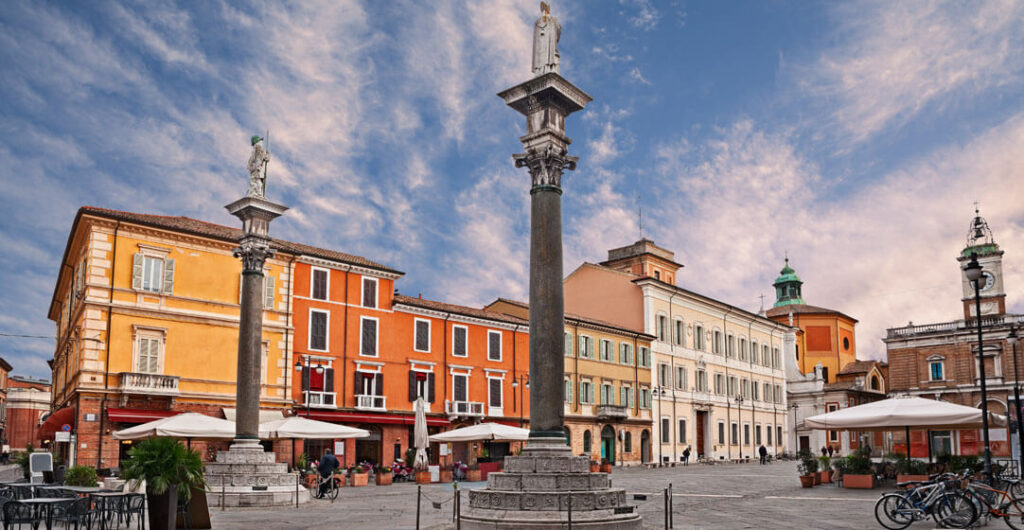
It’s easily accessible, not far from the international flight hub of Milan and well served by train — meaning we could get away with not renting a car. It’s known for its highly educated population — meaning, we expected lots of English speakers. And it has a high standard of living — meaning, we hoped, lots of Italians living the good life.
What really lured us was the region’s reputation for food. Italians from all over the country grudgingly admit that Emilia-Romagna makes the county’s finest cuisine. Many of the foods that the rest of the world thinks of as classic Italian — fettuccine, tortellini, lasagna, Bolognese sauce, prosciutto, Parmesan cheese, balsamic vinegar — have their roots here. We wanted to sample all of this on its home turf.
Here’s what we discovered:
Bologna: City of art, architecture and great food
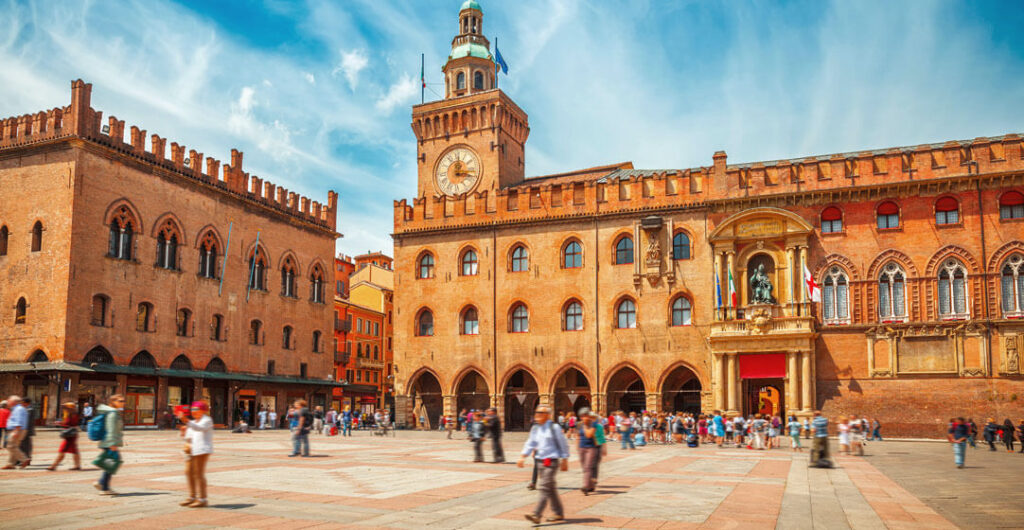
From Milan we took a train ride of a little over an hour to the capital city of Bologna. As we made the 15-minute walk from the train station to our hotel in the city’s historic center, we were caught in the flow of locals strolling under elegant, portico-covered walkways. There wasn’t another person in sight pulling a suitcase, but we saw probably a dozen content-looking dogs out with their owners. Things were off to a good start.
We emerged onto the main square, Piazza Maggiore, at the city’s heart. With about 850,000 residents in the metropolitan area, Bologna is Emilia-Romagna’s largest city, but having this single central square gives it the unified feel of a smaller town. The piazza would be the hub for our exploring over the next few days. Several conspicuous sights are right on it, including the Basilica di San Petronio — among the largest churches in Italy — and an over-the-top 16th century bronze fountain depicting Neptune surrounded by mermaids and putti. But the greatest pleasures are found on surrounding streets, many of them lined with the city’s signature porticoes. The centuries-old sights, minus tourist groups, often felt like discoveries.
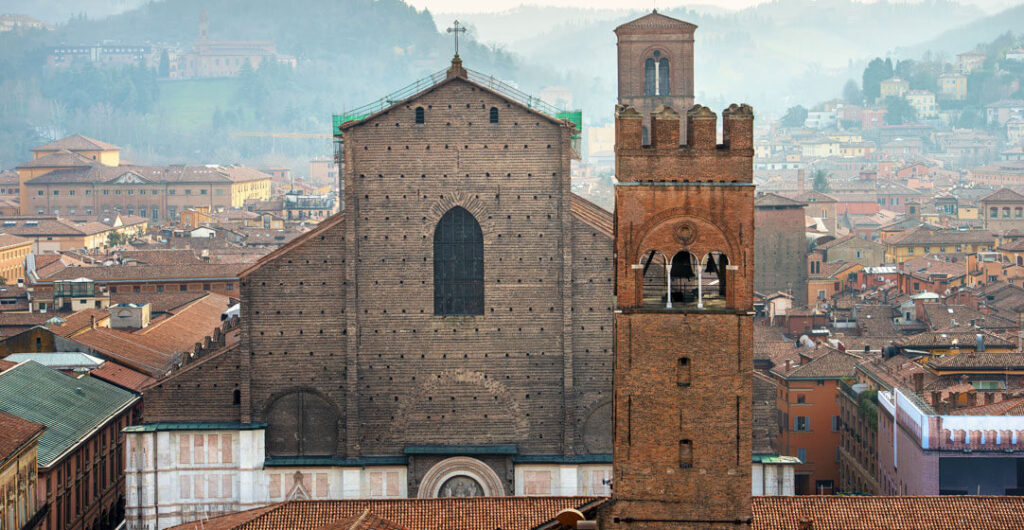
Bologna is home to the oldest university in Europe, founded in the 11th century. Just south of the basilica, in one of the school’s former buildings known as the Archiginnasio, we made our first discovery. Climbing the stairs of the inner atrium, we reached the 18th century Anatomical Theatre of the Archiginnasio. In this sculpture-filled, spruce-paneled room, medical students once watched surgeries performed by candlelight. It’s a remarkable space that feels at once ornate and, medically speaking, primitive.
Bologna’s storefronts, narrow streets and hand-made pasta
Back outside, we walked a few blocks to the Quadrilatero, a series of narrow streets just east of the piazza. For Italian food lovers, the place feels like something out of a dream — one shop window after another filled with hand-made pasta, cured meats, fresh bread, fresh produce, fresh fish. Some items are suitable for travel, but even if you aren’t buying, it’s worth going inside just to savor the aromas and watch lucky locals shopping for supper.
Interspersed among the shops are restaurants and cafes, most with tables spilling out onto the streets, where locals — and their well-behaved dogs — snacked on piadine (flatbread sandwiches). We shared one made with mortadella, the smoky, fine-ground sausage that’s the inspiration for American bologna. We’ll never think of baloney the same way again.
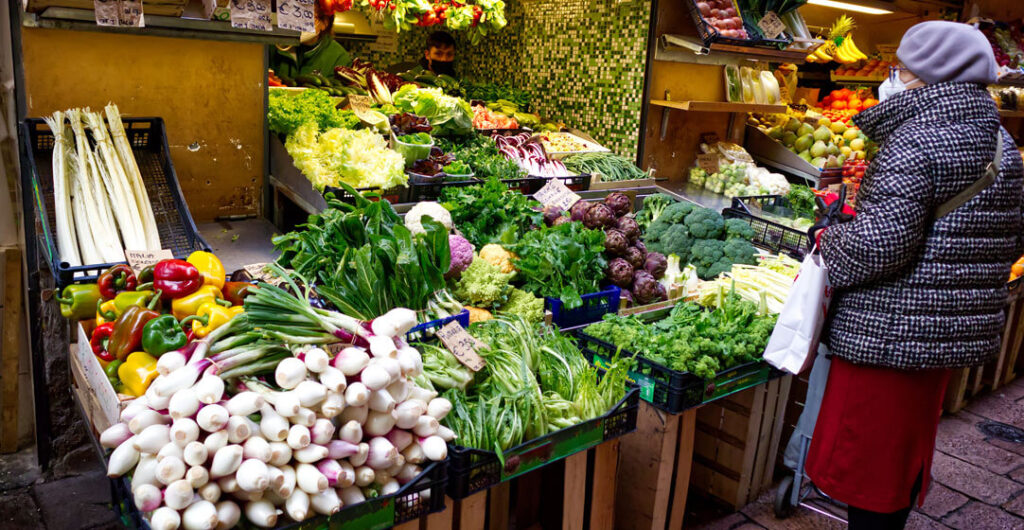
Packed in among the Quadrilatero’s storefronts, with a façade that’s inconspicuous by Italian standards, is the church of Santa Maria della Vita. We climbed its steps and went inside to make another discovery: tucked in one corner was a Renaissance masterpiece, a life-size terracotta rendering of The Lamentation over the Dead Christ by Niccolò dell’Arca. The anguished faces of the Virgin Mary and the other figures were startlingly lifelike and riveting in their raw emotion.
As we continued to explore, other highlights would include the Basilica of Santo Stefano — a complex of churches built adjacent to and on top of one another over the centuries on the site of a temple to the Egyptian god Isis; the Due Torri — two leaning towers (take that, Pisa) from medieval times, the taller of which you can climb for an unequaled view of the city; and the remarkable Egyptian collection of the Museo Civico Archeologico.
But the greatest pride of Bologna isn’t a church or a museum, it’s pasta. We experienced the two most revered dishes, tortellini in brodo and tagliatelle alla bolognese, in one meal at the restaurant Da Cesari. Seventy-year-old, family-run Da Cesari may not be the city’s most sophisticated restaurant, but it was its own kind of perfection — a timeless scene of gregarious waiters bustling around the dark-paneled dining room, serving tables of family and friends who all had the air of repeat customers. The tender, richly flavored pasta fulfilled our expectations. With each bite you could taste the care that went into making it. Ah, Italy. …
Ravenna: Italian churches in the former seat of Byzantine power
We broke up our time in Bologna with a daytrip by train to Ravenna. This modest coastal town was once, 1,500 years ago, one of Europe’s most important cities, the capital of the Roman empire in its final days and then the hub of Byzantine power in the West. Remaining from that long-ago era is a collection of churches decorated with the finest (so it’s said) Byzantine mosaics in the world.
If you’re used to looking at the elaborately painted interiors of Italian churches, prepare for a similar yet remarkably different experience. Ravenna’s Basilica San Vitale, Mausoleo de Galla Placidia, Sant’Apollinare Nuovo, and Battistero Neoniana are all decorated with biblical scenes, but they’ve been painstaking rendered from thousands of mosaic tiles. They’re extraordinarily well preserved, the colors radiating with a vibrancy that paint can’t equal. The details, from facial expressions to rolling landscapes, are impressively true to life, but the abstract patterns that interspersed with them are just as striking.
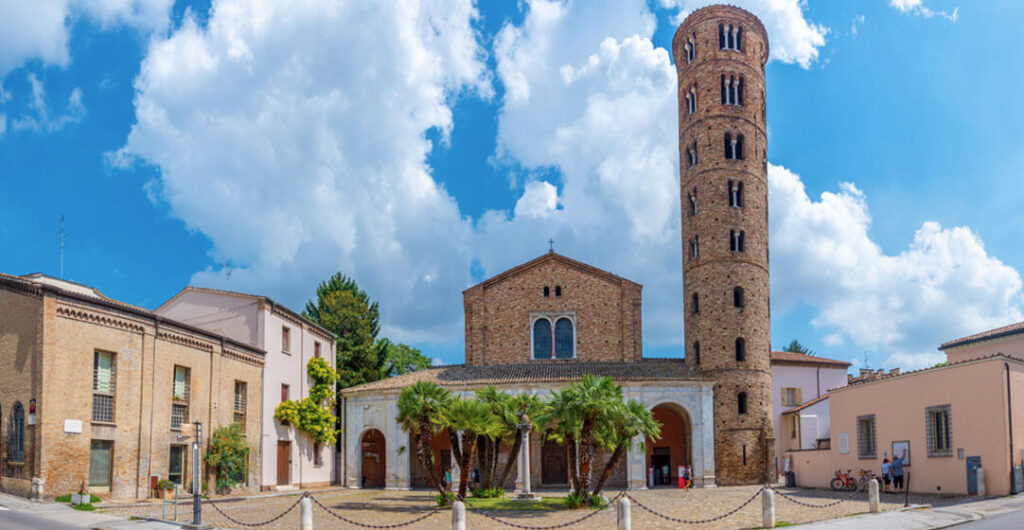
The nature of Ravenna’s sights makes them more “touristy” than other places we visited in Emilia-Romagna, and crowds and lines are common in the summer. But on the spring afternoon of our visit, there were never more than a handful of people basking with us in the mosaics’ glow.
Parma: Namesake of Parmesan Cheese
Our third stop, Parma, is about halfway between Bologna and Milan, and about half Bologna’s size. It lends its name to two of Italy’s most heralded foods: Parmesan cheese and prosciutto di Parma. To us it felt, in several ways, more traditional than Bologna.
In terms of food, tradition came through in Parma’s faithful dedication to the local specialties. It seems there isn’t a restaurant here, no matter how humble or high-end, that doesn’t offer platters of Parmesan and prosciutto (along with other cured pork — culatello and coppa feature prominently). Tortellini, the Bologna favorite, are nowhere to be found, but in their place are two larger stuffed pastas, tortelli (typically filled with pumpkin or herbs and cheese) and anolini (traditionally meat-and-cheese filled, mixed with grated nutmeg).
In terms of sightseeing, Parma gave us fewer surprises than Bologna, but its main attractions were more spectacular. The interior of the 12th-century Duomo (the main cathedral) is covered with a jaw-dropping collection of Renaissance frescoes that would make it a star attraction in Rome or Florence. The highlight was the ethereal Assumption, by local master Correggio, that fills the dome. Next door, the Baptistry is one of Italy’s showpieces of medieval art, with friezes and frescoes that manage to be both monumental and charmingly quirky.
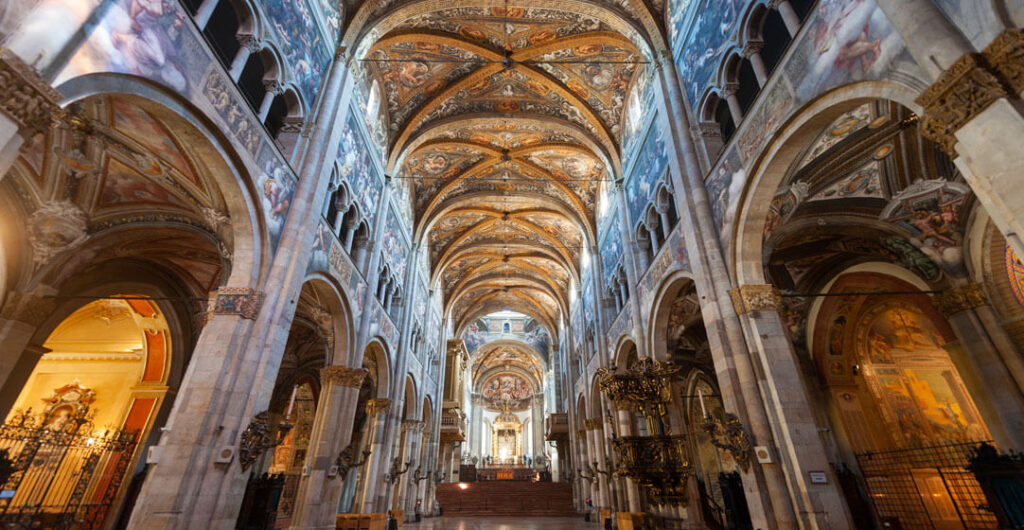
There were smaller treasures as well. The Camera di San Paolo is a room in a former monastery with allegorical frescoes by Correggio—a chance to see the artist’s nimble brushwork up close. Next door is Castello dei Burattini, a museum dedicated to Italy’s long, sometimes freaky, fascination with puppets.
Food tours, sports cars, mountain retreats and more
Part of the point of the trip was not to rush, but that meant we missed out on some attractions. We left content, but we could happily have spent another week or two eating and exploring. Next time we might rent a car and hit sights that can’t be reached by train, such as:
(1) Food tours: Some makers of the region’s signature foods open up their facilities to visitors—you can see how Parmesan is made and do comparative tastings of sweet balsamic vinegar. Surrounding Parma there are five musei del cibo (food museums), and on the outskirts of Bologna there’s an actual food theme park, FICO Eataly World (though it’s hard to imagine it’s as satisfying as a stroll through the Quadrilatero).
(2) Automotive museums: They don’t just make great food here. In the center of the region is “Motor Valley,” where prestige Italian cars and motorcycles are born: It’s home to Ferrari, Maserati, Lamborghini and Ducati. They all have museums and factory tours.
(3) San Marino and Rimini: Perched on a mountain in the southeast corner of the region is San Marino, the world’s oldest and smallest republic — a chunk of land that never got incorporated into Italy. Today its novelty and beautiful views make it a tourist magnet, especially for day-trippers from the nearby beach town of Rimini, known as the Italian Miami Beach. For a dose of unabashed touristy fun, Italian style, this is the place.
—Written by Matthew Lombardi
Seattleite Matthew Lombardi spent over a decade as the principal editor for Italy coverage at Fodor’s Travel. Closer to home, he’s the author of the Moon Travel’s guidebook to Washington.

Travel Planning Tips
Get expert advice: Your perfect getaway awaits. No matter what destination you choose, or how you wish to travel, AAA Travel experts can help you plan a perfect experience that you will remember for years to come.
Purchase travel insurance: Protect your trip investment with travel insurance.
Consider Concierge: AAA’s Concierge Vacations feature done-for-you details and special amenities for travel to world-wide destinations. AAA Travel Agents will make your planning a breeze and your vacation unforgettable.
On the road: Get ready for every trip with a AAA Membership. Get peace-of-mind on the road and much more.
Save with discounts: AAA membership gives you access to exclusive discounts nationwide.









